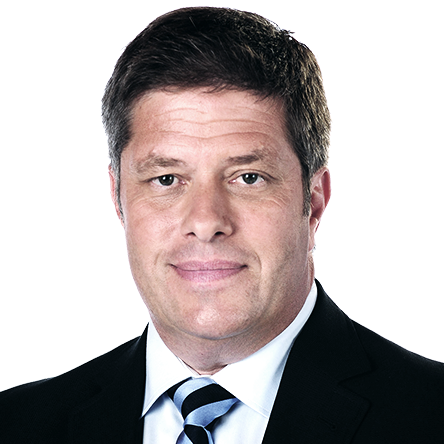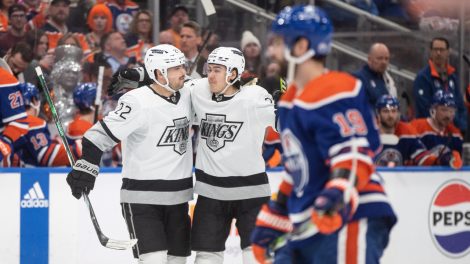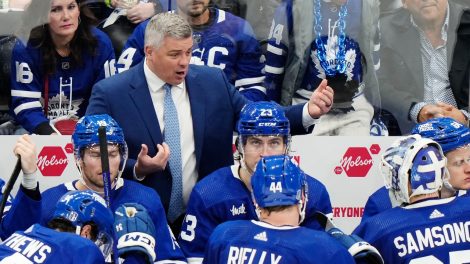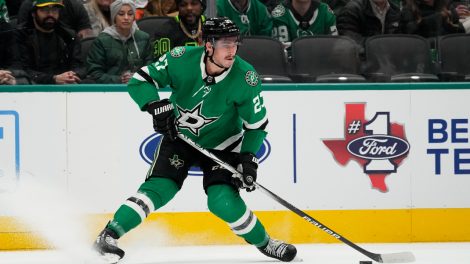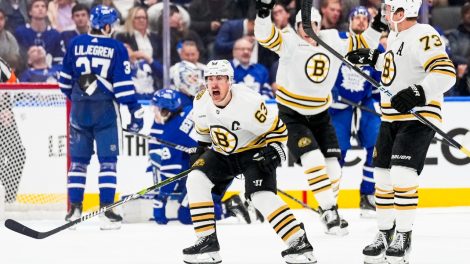It was the one and only time I had this experience in over 20 years as a radio show host.
It was the spring of 2001, and by some fortunate set of circumstances I had a former Toronto Maple Leafs captain and Hall of Famer in the Sportsnet 590 The Fan studio with me for an hour to talk about his career and take calls from our listeners. That guest was Dave Keon.
This was two years after he had declined attending the closing of Maple Leaf Gardens and the opportunity to bring the house down with a raucous standing ovation from the Maple Leafs faithful.
In the quiet setting of our radio studio, we opened the phone lines. Almost every caller didn’t start with a question — they started with a “gush.” They couldn’t believe they were actually talking to the Dave Keon. They would tell him how he was their all-time favourite Leaf; how they pretended they were him when they played ball hockey games as a child. There was plenty of great hockey talk, but it was an unabashed Dave Keon love-in. The low-key Keon appreciated the sentiments, but he always got any emotions in check.
Now 15 years after that interview and 17 years after the closing of Maple Leaf Gardens, this one long-time Leafs loose end appears to be coming full circle. Keon has not moved even in the slightest to embrace his standing as a prominent member of the Leafs’ alumni — one worthy of team honours and, arguably, the greatest Maple Leafs player of all-time.
Keon’s bitter exit from the Leafs organization in 1975 was not totally uncommon. Other Original Six greats had seen their careers experience a time of bad feelings with their respective organizations. But Gordie Howe and Ted Lindsay in Detroit, Bobby Orr in Boston, Bobby Hull in Chicago and Rocket Richard and Guy Lafleur in Montreal had all figured a way to let bygones be bygones and had fully embraced the organizations where they had thrived as star players in the NHL. Not so with the Maple Leafs and Dave Keon.
Even those who followed Keon in the role of Leafs captain and first-line centre all left with varying degrees of a sour taste in their mouths: Darryl Sittler had an extremely bitter split from the team as he headed to Philadelphia; Doug Gilmour was disappointed in the cost-cutting owner and mandated poor trades as he left for New Jersey; and Mats Sundin was vilified for not having waived his no-trade clause as he headed to Vancouver. They all came back as full-fledged Leafs legends appreciated and embraced by the fans and the organization. Again, not the case with Keon.
Two years after the pleasant in-studio visit at The Fan, I talked to Keon for about half an hour in writing my book (along with Damien Cox) on the 1967 Maple Leafs team, the last to win the Stanley Cup. (Fittingly, Keon was the first-ever winner of the Conn Smythe Trophy as the Most Valuable Player in that last Leafs championship.) Though a little Keon vitriol towards the Leafs came out as he somewhat bitterly took issue with the Leafs’ policy of merely honouring numbers of great Leafs players rather than retiring them, the overall reason why he remained outside the franchise’s family continued to have a fair degree of mystery.
If his issued remained his bitter parting in 1975 and the role that the Leafs’ then-owner Harold Ballard played in it, that would be a valid reason. But Ballard died 26 years ago, so it really is ancient history.
The casualty in all this is an entire generation of Leafs fans who never experienced the opportunity to pretend they were Dave Keon playing ball hockey and to grow to know what a great treasure Keon actually was in Maple Leafs history. All generations of Montreal fans realize that with Jean Beliveau like Boston does with Orr and Detroit does with Howe, for example.
So, who is Dave Keon?
He played for Toronto for 15 years. He had 20 or more goals in 11 of those seasons when 20 goals was a high benchmark. He had 30 or more goals on three occasions. When the Leafs won their three Stanley Cups from 1962 to 1964, he led the team in scoring with 19 goals in 36 playoff games, which would be a clip of almost 40 goals per season. As mentioned earlier, he was the league’s MVP during the final Stanley Cup victory in 1967.
The goal-scoring statistics alone don’t do him justice. He was the player you couldn’t take your eyes off of whenever he was on the ice; the best two-way player out there, the best skater, the best puck handler, the best passer. He was also a remarkably clean player. He took pride in the low number of penalty minutes he took — he had a grand total of just two penalty minutes in four of his seasons, and only hit double digits twice in his 15 campaigns.
The long-time trainer, the late Bobby Haggart, worked with them all during those great years. He called Keon “absolutely the best of them all … the true and consummate Toronto Maple Leaf player.”
It would be comparable to Doug Gilmour playing 15 seasons with the Leafs rather than the five he played — and playing them all at that high level he played when he was in Toronto. Oh, and also winning four Stanley Cups.
Skill-wise, Keon would be the modern day Patrick Kane to Frank Mahovlich playing the role of Jonathan Toews.
It is time for a Leafs history lesson for that generation of passionate Toronto Maple Leaf fans.
The one great loose end has been tied up.

